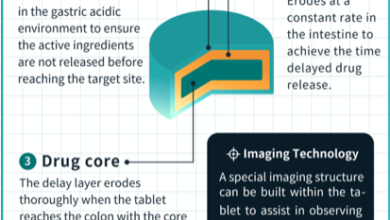
Potential target against natural killer/T-cell lymphoma discovered
[ad_1]
A research team from the Cancer Science Institute of Singapore (CSI Singapore) at the National University of Singapore (NUS) has found that the transcription factor, TOX2, is abnormally elevated in patients with natural killer/T-cell lymphoma (NKTL).
Elevated TOX2 levels lead to the growth and spread of NKTLs, as well as overproduction of PRL-3 – an oncogenic phosphatase known to be a key player in the survival and metastasis of several other types of cancer. This breakthrough discovery presents a potential new therapeutic target for treating NKTL.
About current NKTL care
NKTL is a related Epstein-Barr virus (EBV), aggressive non-Hodgkin lymphoma (NHL) with very poor treatment outcomes in advanced stages. It is prevalent in Asia and Latin America but rare in Europe and North America. The combination of radiation therapy and chemotherapy is the consensus standard of therapy for NKTL patients, but they are also frequently associated with high relapse rates and serious side effects. Increasing knowledge of the molecular mechanisms leading to the development of NKTL, as well as the development of new targeted therapy strategies, needs to be addressed.
Last year, Grid Biosciences signed a licensing agreement with the National Institute of Allergy and Infectious Diseases (NIAID), part of the National Institutes of Health (NIH) to develop a vaccine against EBV.
Chng Wee Joo and Takaomi Sanda from CSI Singapore, along with Ong Choon Kiat from Duke-NUS Medical School, report their findings in a paper published in the scientific journal Molecular Cancer. The collective efforts of Jianbiao Zhou, Tze-King Tan, Sabrina Hui-Min Toh, Sinan Xiong, and other team members, have contributed to this discovery.
Patient survival
Their findings are also the first to demonstrate the involvement of TOX2 and PRL-3 in NKTL. These findings were validated in both cell lines and in a large set of patient tumor samples. In addition, the team analyzed the clinical features of 42 NKTL cases in an independent cohort and found that TOX2 was not only overexpressed in primary NKTL tumors, but also negatively associated with patient survival.
Currently, there are no specific TOX2 inhibitors. Thus, targeting TOX2, or its downstream PRL-3, could be a valuable therapeutic intervention for NKTL patients and warrants further study in the clinic.
Chng, a co-author of the study, said: “We have now identified new treatment targets, TOX2 and downstream PRL3, in NKTL, where new treatments are urgently needed. We can use different strategies to target this. Proteolysis-targeting chimeras (PROTAC) that target TOX2 to degrade TOX2 protein may be a viable NKTL therapeutic option. The humanized antibody, PRL3-zumab, has been approved for phase 2 clinical trials in Singapore, the US and China to treat all solid tumors. With our findings from this study, it is definitely timely to evaluate the effects of PRL3-zumab in patients with NKTL.”
“Overall, the care of NKTL patients is still a challenge in the clinic. New insights into the molecular mechanisms of this disease will guide the development of effective targeted therapies to improve survival of NKTL patients, especially for refractory or relapsed cases,” said Jianbiao Zhou from CSI Singapore, first author of the study.
Looking ahead, the group is testing new agents to target TOX2 and PRL-3 in the NKTL. The long term goal is to bring this new agent into clinical trials.
[ad_2]
Source link






